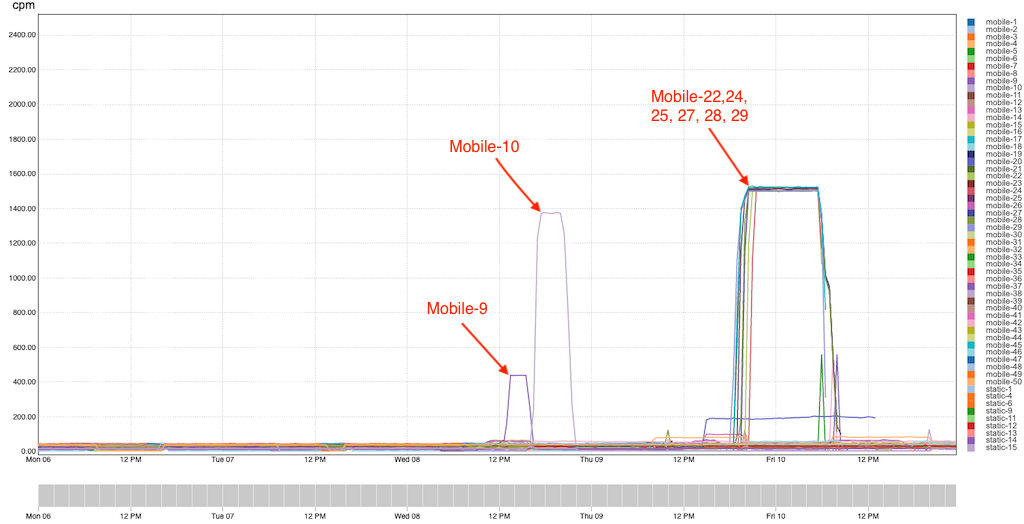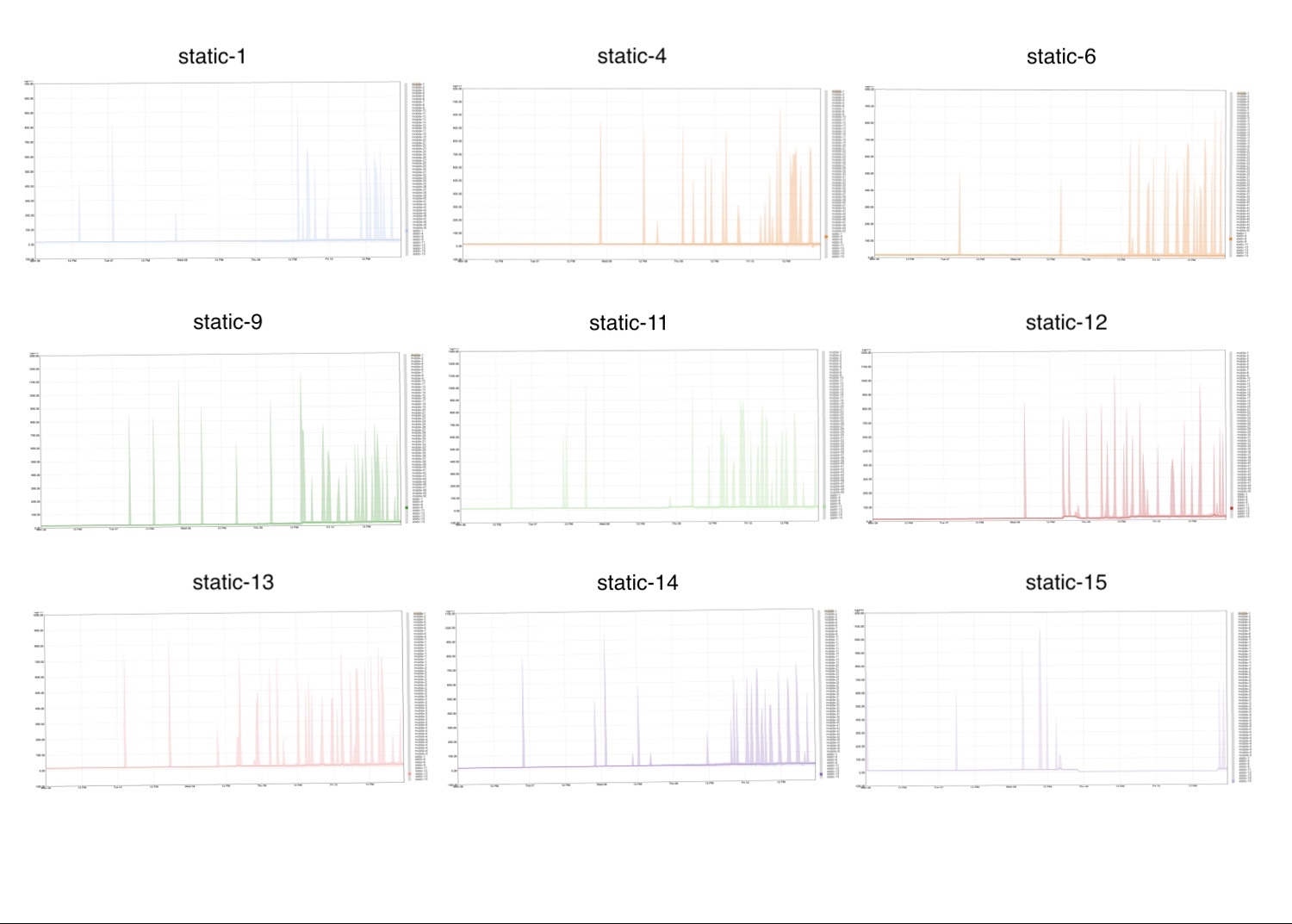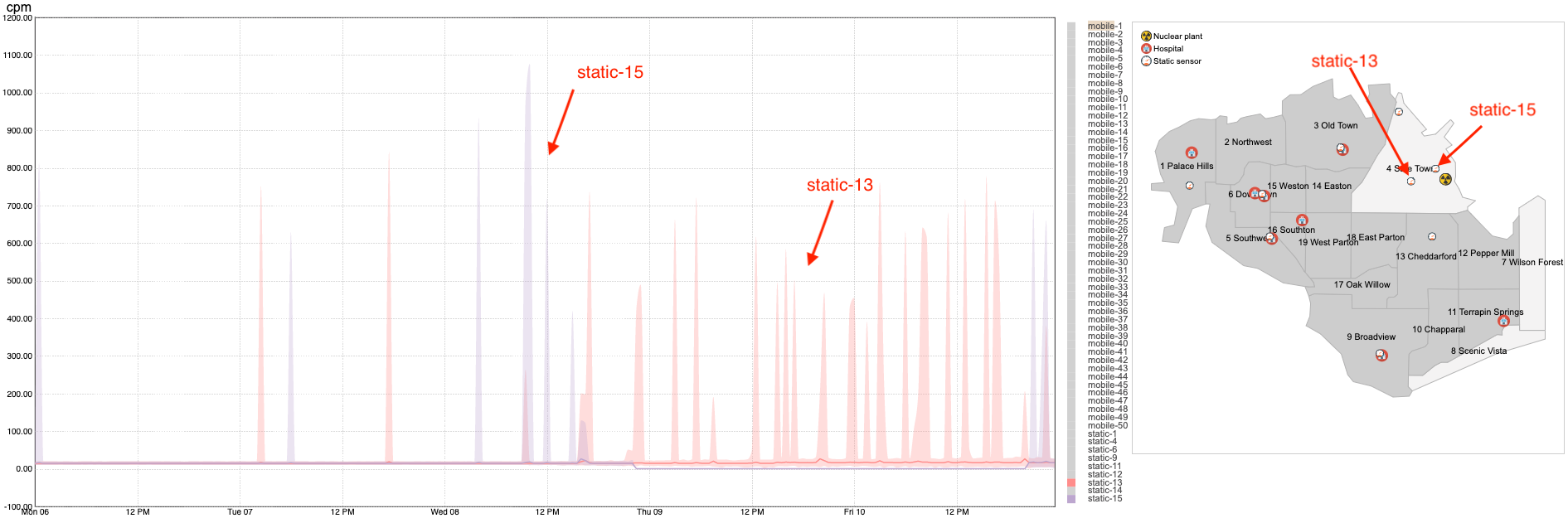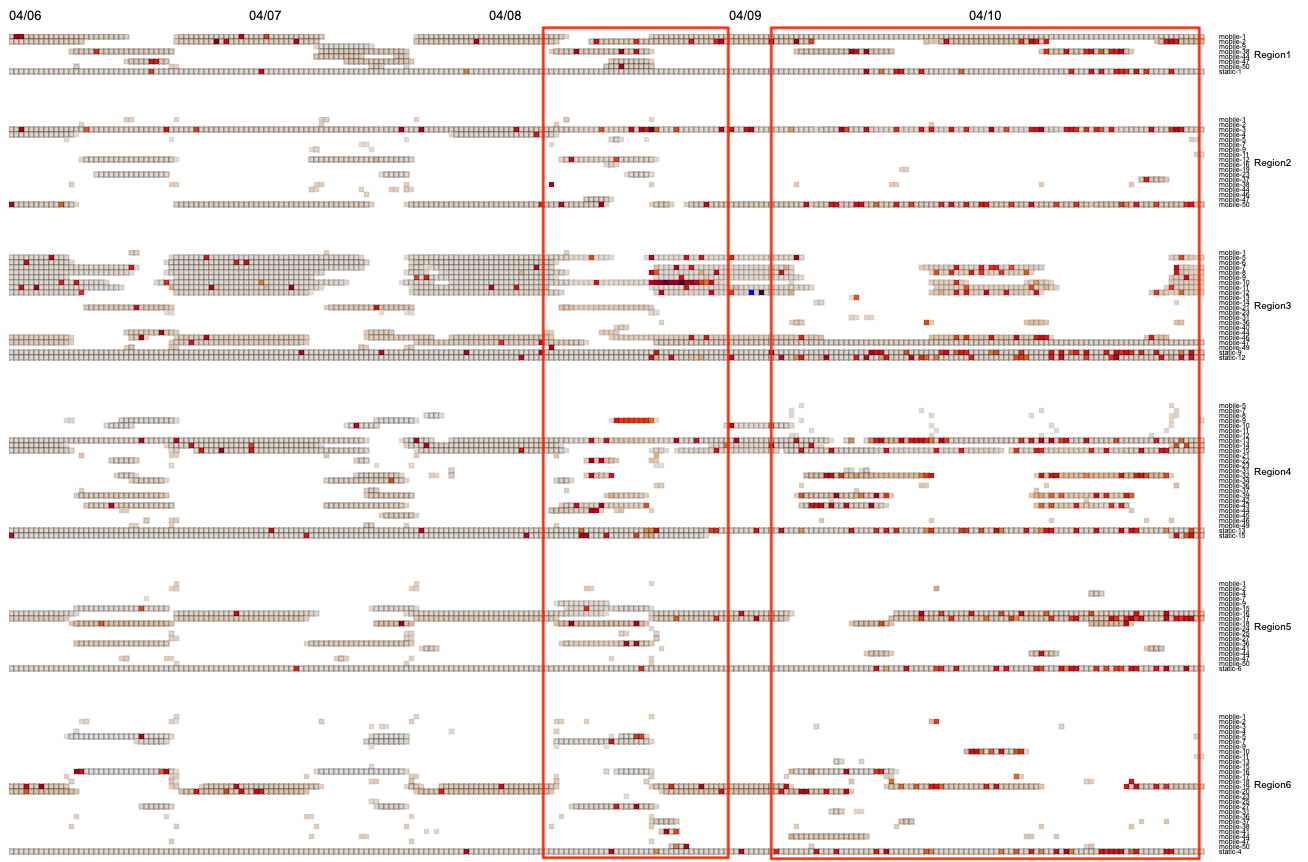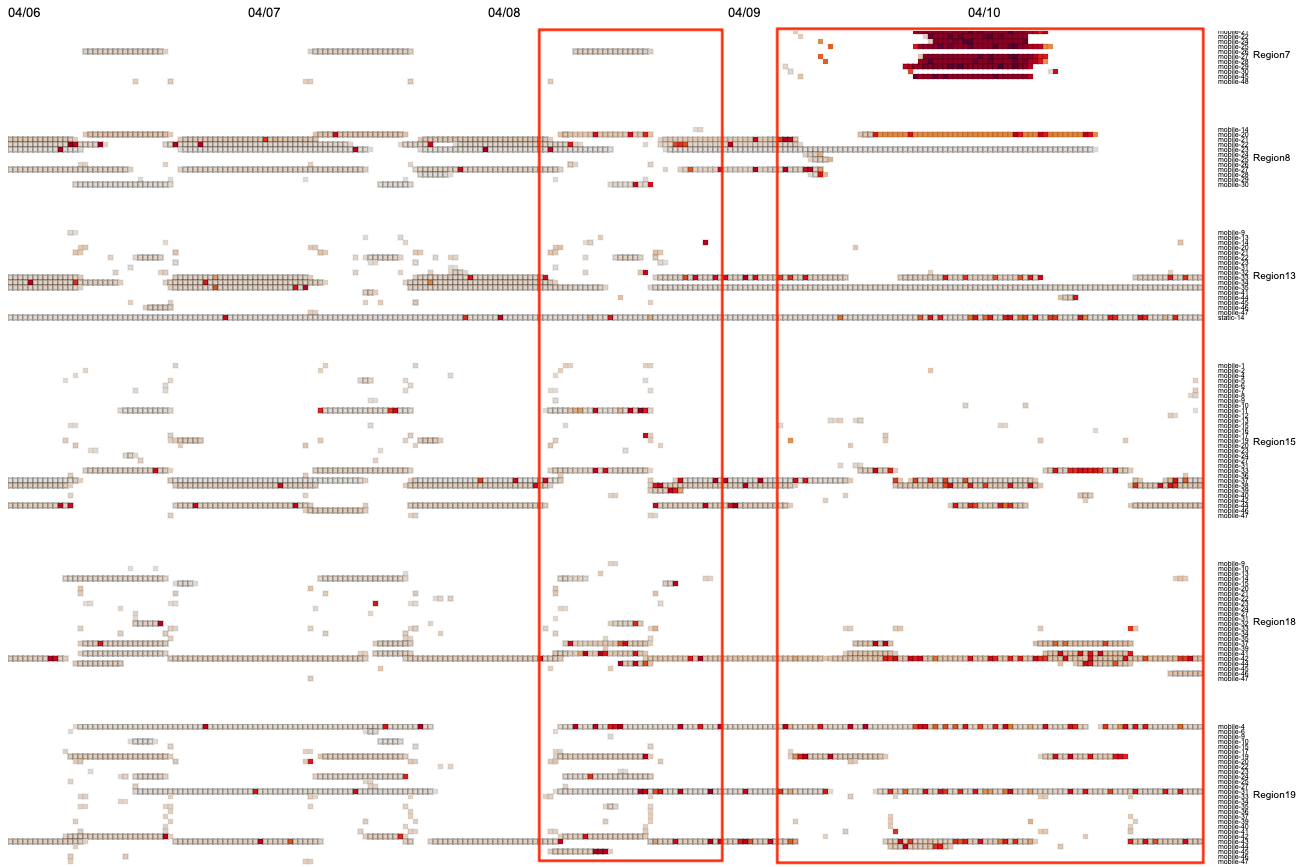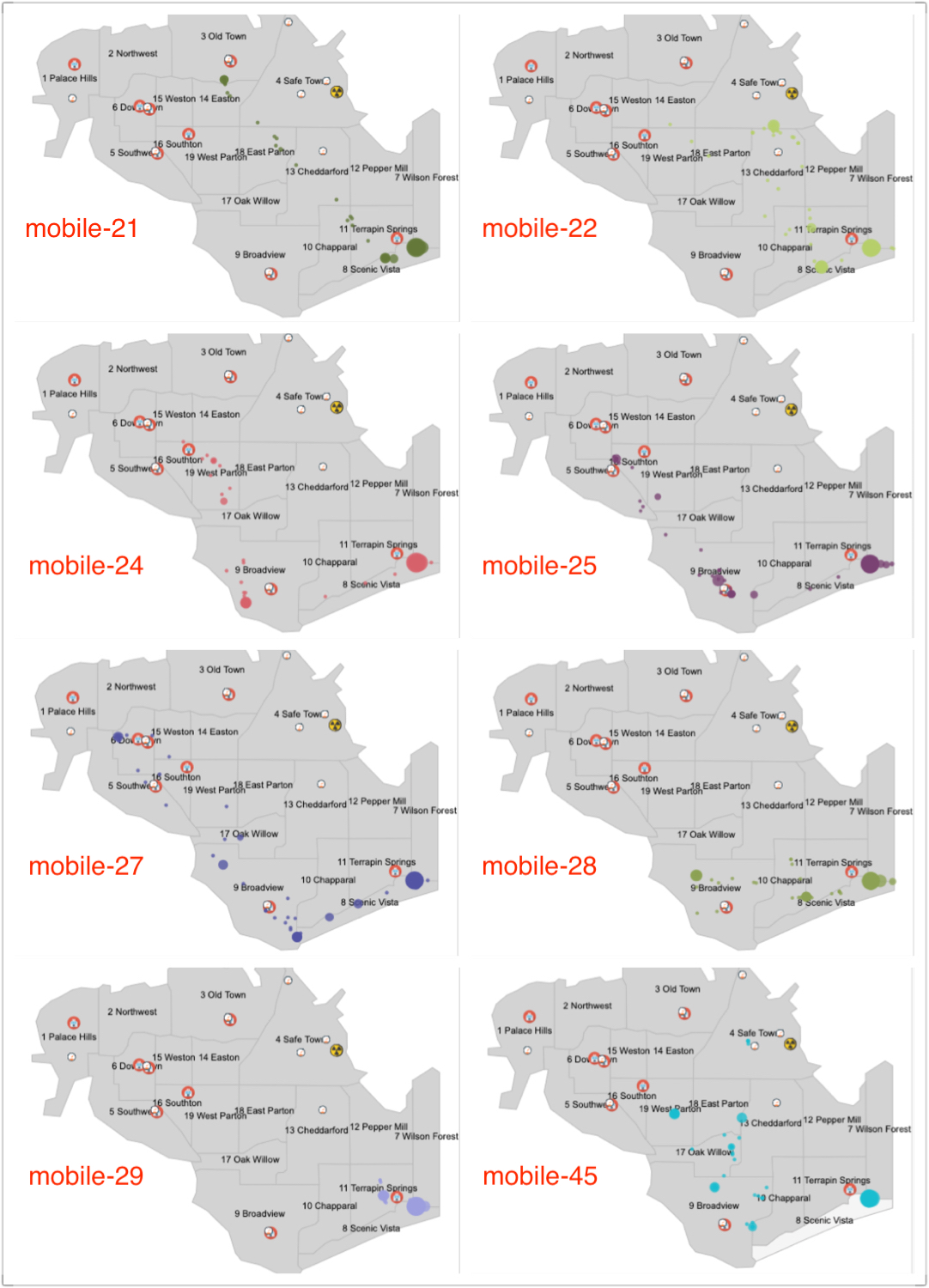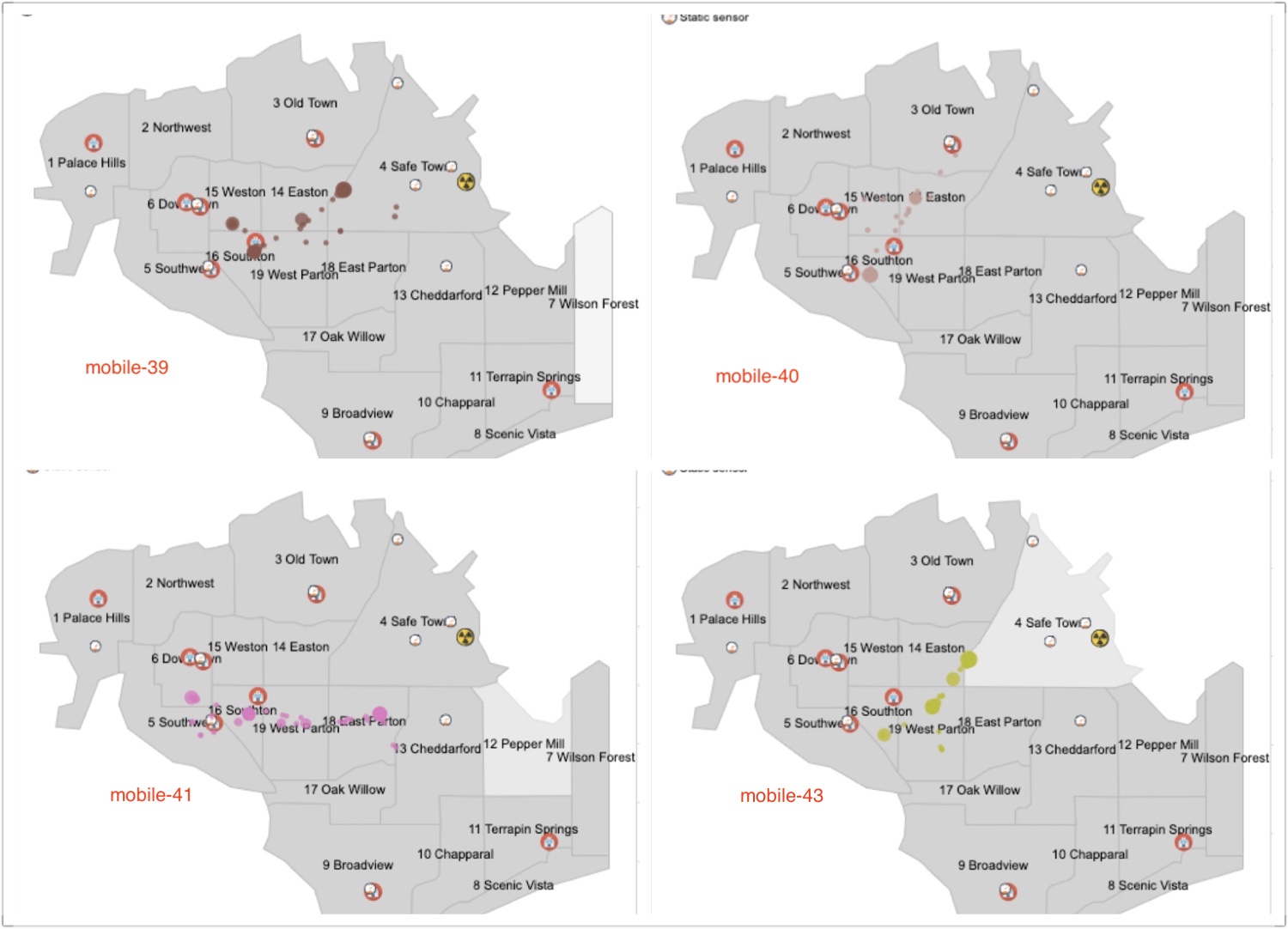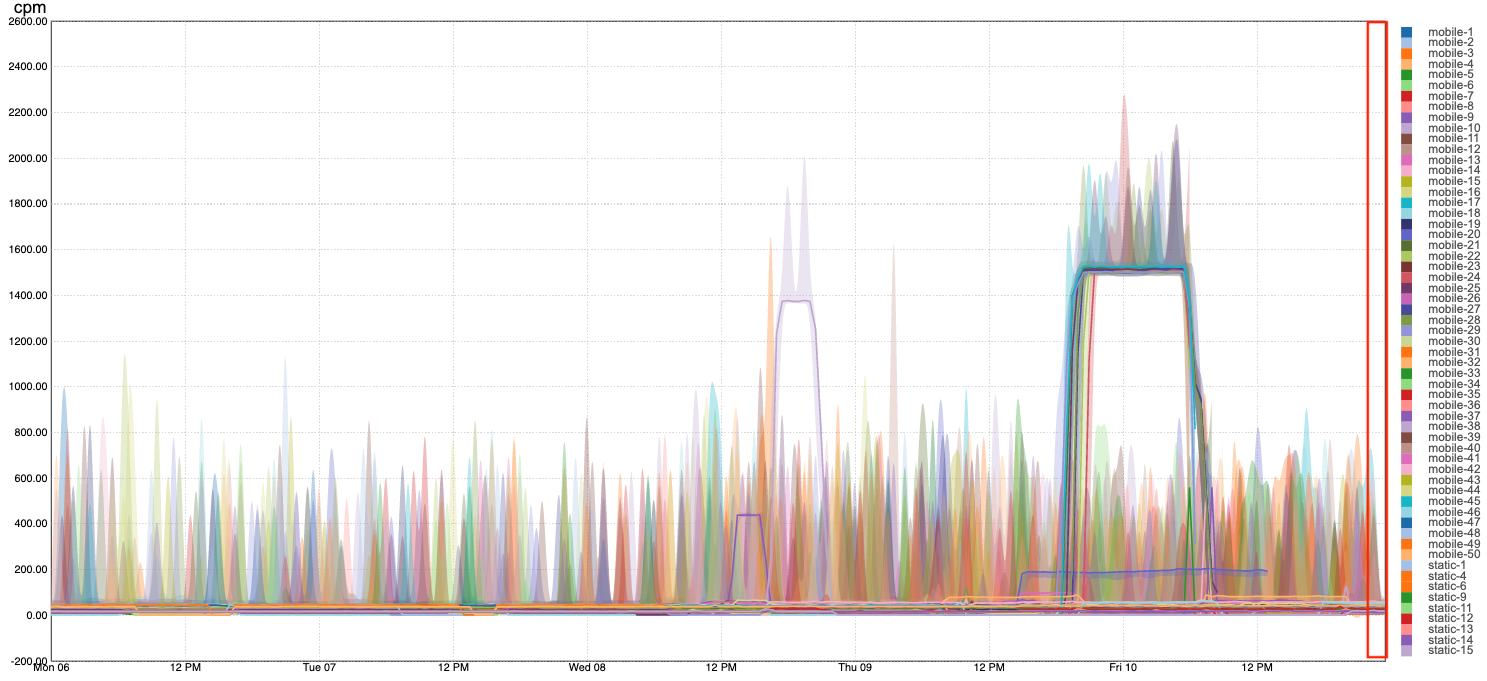

Entry Name: "TTU-Jian-MC2"
VAST Challenge 2019
Mini-Challenge 2
VAST Challenge 2019
Mini-Challenge 2
Team Members:
Jian Guo, iDV Lab, Texas Tech University, jian.guo@ttu.edu PRIMARYTommy Dang, iDV Lab, Texas Tech University, tommy.dang@ttu.edu
Student Team: YES
Tools Used:
HTML, CSS, JavaScriptD3.js
GitHub: https://github.com/iDataVisualizationLab/VAST19_mc2
Web demo: https://idatavisualizationlab.github.io/VAST19_mc2/
Approximately how many hours were spent working on this submission in total?
300 hoursMay we post your submission in the Visual Analytics Benchmark Repository after VAST Challenge 2019 is complete? YES
Video
https://idatavisualizationlab.github.io/VAST19_mc2/report.htmlSystem Overview
Our visualization application includes four parts: The heat map, the St. Himark map, the control panel and the time series chart.The heat map shows the readings of all the sensors that have appeared in a region for the entire five-day time span (April 4 to April 10). The x axis of the heatmap represents time and y axis represents different sensor readings, including mobile sensors and static sensors in a certain region. A square represents the maximum reading of a certain sensor in 30 minutes period. The opacity of the border from 0 to 1 shows the number of readings from 0 to 360 in that period. The map shows all 19 regions in St. Highmark. Each region can be clicked to show/hide the corresponding heat map. Multiple regions can be selected to compare. The control panel shows the color scale of the heat map, and selection options for easily controlling both the heat map and the time series chart. The map and the control panel can be dragged conveniently. Finally, the time series shows the reading of all 50 mobile sensors and 9 static sensors spanning over the entire 5 days. The x axis represents timestamps of 30 minutes interval in 5 days. The y axis represents the average values for the readings. The legend of the time series can be highlighted and clicked. Toggling the legend box will show/hide the corresponding line. Toggle-clicking a line will show the area between the line's maximun and minimum values. This could give us a big picture of the value range.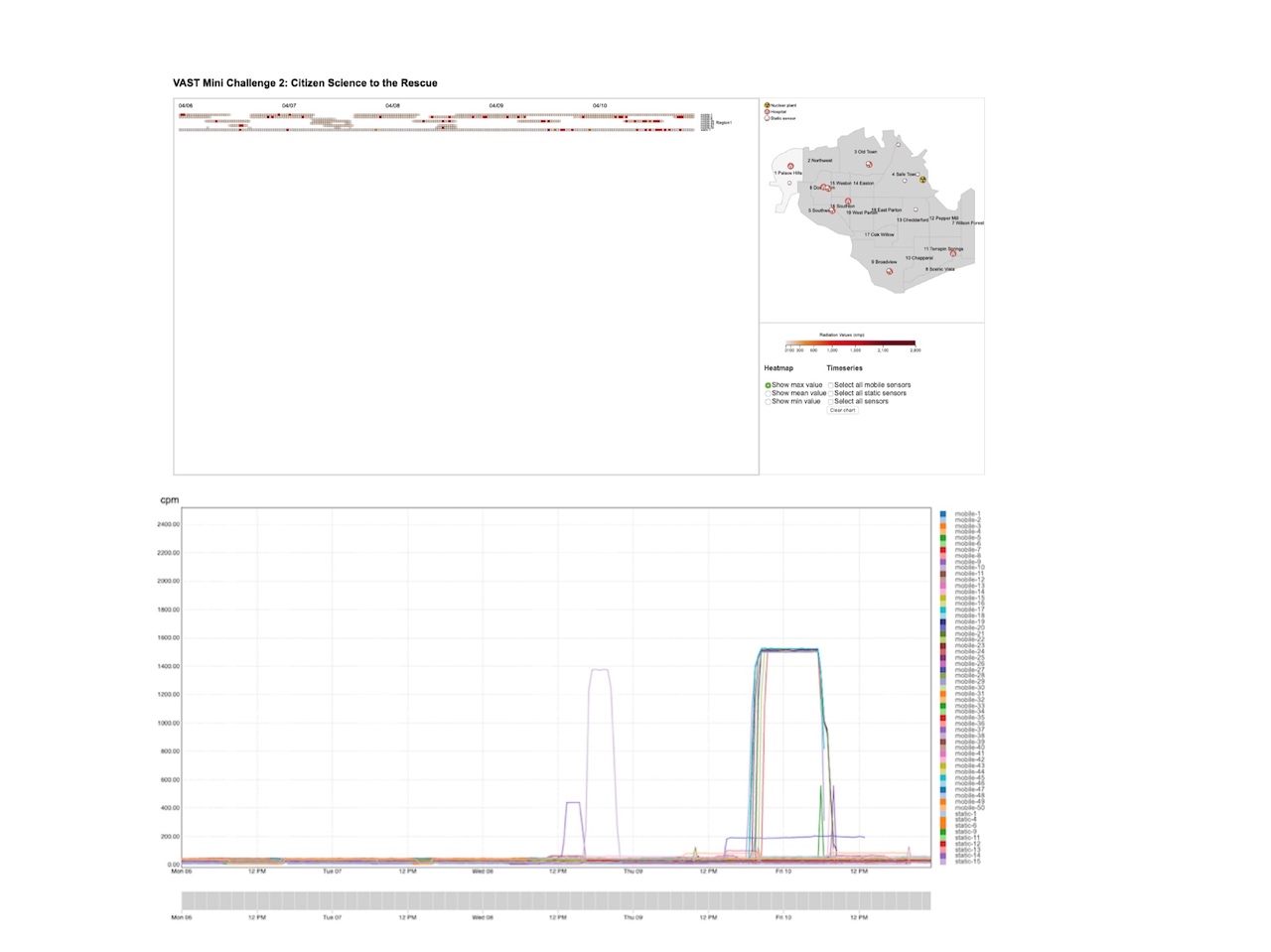
Figure 1. Our visual interface: (left) Heat map, (upper-right) St. Himark map , and (bottom-right) Control panel;
